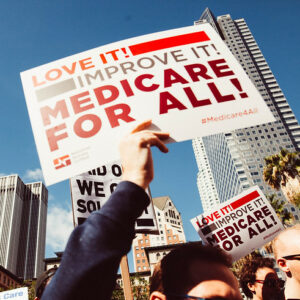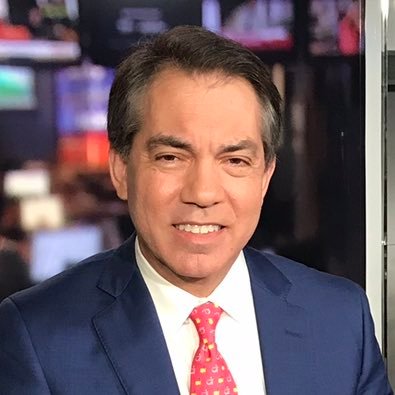A government takeover of our nation’s healthcare would lead to a far costlier, lower quality and less accountable system than what Americans have today — warts and all. Voters immediately recognized this, and Democrats, who were briefly honest about their liberal-minded intentions, quickly pivoted from their early and exuberant endorsement of “Medicare for All” ahead of the 2020 election.
The prospect of innovation-killing price controls and patient access restrictions, unimaginable tax increases, and uncontrollable spending met liberals’ utopian vision of a socialized medicine system in America like a political freight train. Yet, like any good cartoon, liberals’ theater of the absurd has propped up the villain after near death for another go, albeit using different names, costumes and trickery. The irony is that they are partnering with some of the largest health services corporations in America to do so.
Think of it as “Plan B” to advance socialized medicine.
Democrats, who once wore their disdain for big health insurance companies as a badge of honor, have enabled a small number of massive corporate conglomerates to build gargantuan enterprises with ever-increasing market shares across varying healthcare sectors. This includes a near encirclement of federal entitlement programs like Medicare.
All this consolidation and expansion has occurred with relatively little resistance from the party of self-proclaimed antitrust crusaders like senators Bernie Sanders and Amy Klobuchar. For example, corporations like UnitedHealth, Humana and CVS are no longer just insurance or chain pharmacy companies — they are also massive pharmacy benefit managers; primary, urgent care and home health providers; specialty pharmacy operators; health IT consultants; group purchasing organizations; and more.
So, how did the interests of politicians and big health services corporations align? These increasingly too-big-to-fail companies are likely betting that the near-term profits they can glean from dominating entitlement programs and greater consolidation in the private markets may be worth the long-term political stranglehold Democrats will have on them down the road. For liberal politicians, such a partnership allows them to dictate the terms and give them control over revenues that can be diverted to other political priorities.
Look no further than the Inflation Reduction Act’s changes to Medicare as a prime example. Despite claims from the White House, the biggest winners of this mythically named law were not older Americans struggling to afford their medicines but rather big insurer companies, corporate lobbyists and spend-happy politicians. Make no mistake, the Inflation Reduction Act was a spending bill, not a “savings” bill.
First, the IRA diverted more than $280 billion in Medicare drug “savings” to help fund supersized healthcare subsidies on policies issued by big insurers and to pay for other unrelated spending like tax credits for electric vehicles and solar panels.
Second, few older Americans even know these new Medicare-funded special interest handouts were made available immediately while most of the promised drug benefits sold to them were delayed for up to four or five years.
Third, new government drug price controls included in the Inflation Reduction Act do not guarantee that all their “savings” are passed on to Medicare patients instead of going into the coffers of the politicians and corporations newly empowered to collect them. These price controls will stunt life-saving advancements for areas in desperate need of development — like cancer treatments, kidney care and Alzheimer’s research — and patients suffering from these conditions may not even see the benefits of lower prices. If price controls are the foundation of socialized medicine, the Inflation Reduction Act was the first trojan horse sent to conceal these destructive forces within the city walls.
Sadly, even once-trusted organizations such as the AARP are now compromised in this web of public sector-corporate entanglement. Despite raiding billions from Medicare and lacking guardrails to ensure the “savings” from the Inflation Reduction Act’s price controls would go to patients, AARP inexplicably served as the bill’s biggest cheerleader. In fact, AARP spent more than $60 million to help pass it. This is not a good look, considering AARP has a financial deal with UnitedHealth that pays it more than $700 million yearly — more than twice what the organization earns from membership dues.
This approach allows liberals to execute their agenda while keeping their distance from the politically toxic “Medicare for All” label. In the end, Democrats also believe they hold the final trump card in this unholy alliance. Once this convoluted and increasingly monopolistic system inevitably collapses — due to cost and diminished quality of care — an even more aggressive and life-threatening alternative will quickly be positioned as the singular option: government-run, single-payer healthcare. Basically, Democrats believe their “Plan B” is a way for them to have their cake and eat it too.
Let’s blow out the candles before it’s too late.


